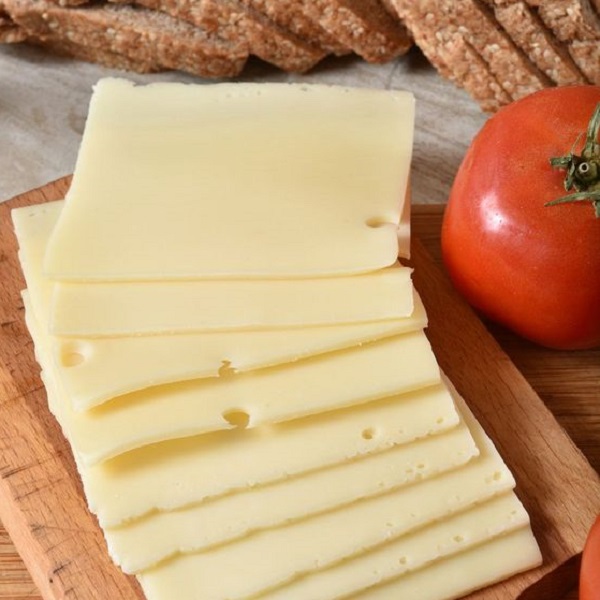Cheese, a beloved culinary staple enjoyed across the globe, has long been a subject of debate when it comes to its impact on health. Is it a nutritious addition to your diet or a guilty pleasure best enjoyed in moderation? The answer, as with many things in nutrition, isn’t black and white. Let’s delve into the complexities of cheese, exploring its nutritional value, potential health benefits and drawbacks, and tips for incorporating it into a balanced diet. Is cheese healthy or unhealthy?
The Nutritional Powerhouse: A Bounty of Benefits
Is cheese healthy or unhealthy? Cheese, derived from milk, is a concentrated source of essential nutrients that contribute to overall health and well-being.
-
Protein: Cheese is a rich source of protein, crucial for building and repairing tissues, supporting immune function, and maintaining healthy hair and nails.
-
Calcium: It’s also an excellent source of calcium, a mineral vital for strong bones and teeth. Calcium also plays a role in muscle function, nerve transmission, and blood clotting.
-
Vitamins and Minerals: Cheese provides various vitamins and minerals, including vitamin B12, important for red blood cell formation and neurological function, as well as zinc, phosphorus, and riboflavin.
-
Healthy Fats: Cheese contains both saturated and unsaturated fats. While saturated fat intake should be moderated, some studies suggest that the saturated fat in cheese might not have the same negative impact as other sources.
Potential Health Benefits: Beyond Basic Nutrition
In addition to its basic nutritional value, cheese has been associated with certain potential health benefits.
-
Gut Health: Cheese, particularly aged varieties, contains probiotics – beneficial bacteria that contribute to a healthy gut microbiome. A balanced gut microbiome is linked to improved digestion, immunity, and even mental well-being.
-
Bone Health: The calcium and vitamin D content in cheese play a vital role in maintaining bone health and reducing the risk of osteoporosis, a condition that weakens bones and increases fracture risk.
-
Cardiovascular Health: Contrary to some beliefs, recent research suggests that moderate cheese consumption might not be detrimental to cardiovascular health. Some studies even indicate potential protective effects against heart disease, although more research is needed in this area.
-
Weight Management: Cheese, with its protein and fat content, can contribute to feelings of fullness and satisfaction, potentially aiding in weight management efforts. However, portion control is crucial, as cheese can also be calorie-dense.
Potential Drawbacks: Moderation is Key
While cheese offers nutritional benefits, it’s important to be mindful of its potential drawbacks and consume it in moderation.
-
Saturated Fat and Cholesterol: Cheese can be high in saturated fat and cholesterol, which, when consumed in excess, can contribute to heart disease and other health problems. Opt for lower-fat cheese options or enjoy full-fat cheeses in moderation.
-
Sodium Content: Cheese is often high in sodium, which can raise blood pressure if consumed in excess. Choose cheeses with lower sodium content or limit your portion sizes.
-
Lactose Intolerance: Individuals with lactose intolerance may experience digestive discomfort after consuming cheese. Opt for aged cheeses, which naturally have lower lactose levels, or choose lactose-free alternatives.
-
Calories: Cheese is a calorie-dense food, so be mindful of portion sizes, especially if you’re watching your calorie intake.

With countless cheese varieties vying for your attention, choosing the healthiest options can be daunting. Let’s explore some key considerations to help you make informed decisions.
-
Read the Label: Pay close attention to the nutrition facts label, comparing different cheeses for their fat, calorie, protein, and sodium content. Opt for cheeses with lower fat and sodium levels, especially if you’re watching your intake.
-
Choose Variety: Don’t limit yourself to a single type of cheese. Explore different varieties to enjoy a wider range of flavors, textures, and nutritional benefits.
-
Portion Control: While cheese can be a healthy addition to your diet, it’s important to practice portion control. A serving size of cheese is typically 1-2 ounces (28-56 grams).
-
Pair Wisely: Combine cheese with fruits, vegetables, whole-grain crackers, or lean protein sources to create a balanced and nutritious snack or meal.
-
Consider Your Dietary Needs: If you have specific dietary restrictions or concerns, such as lactose intolerance or high blood pressure, choose cheeses that accommodate those needs. Lactose-free cheeses or those with lower sodium content are readily available.
Cheese and Weight Management: A Balancing Act
The relationship between cheese consumption and weight management is a complex one.
Protein and Fat
Cheese’s combination of protein and fat can contribute to feelings of fullness and satisfaction, potentially helping you manage your appetite and avoid overeating. However, cheese can also be calorie-dense, so portion control is essential.
Research Findings
Some studies have shown that moderate cheese consumption might not be associated with weight gain or even contribute to weight loss efforts, especially when replacing other high-calorie or processed foods.
Individual Needs
Ultimately, the impact of cheese on weight management depends on various factors, including your overall diet, activity level, and individual metabolism.
Tips for Mindful Cheese Consumption:
- Choose Lower-Fat Options: Opt for reduced-fat or part-skim cheeses to reduce calorie and fat intake.
- Portion Control: Be mindful of your portion sizes. A serving of cheese is typically 1-2 ounces.
- Balance with Healthy Foods: Pair cheese with fruits, vegetables, or whole grains to create a balanced and satisfying snack or meal.
- Mindful Eating: Pay attention to your hunger cues and avoid mindless snacking.

The Culinary Chameleon: Cheese’s Versatility in the Kitchen
Cheese’s versatility makes it a beloved ingredient in countless dishes, from appetizers and salads to main courses and desserts.
-
Salads: Crumbled or shaved cheese adds a burst of flavor and a creamy texture to salads. Feta, goat cheese, or Parmesan are popular choices for salad toppings.
-
Sandwiches and Wraps: Cheese is a classic sandwich and wrap filling, adding protein and richness. Choose leaner options like Swiss or mozzarella or enjoy full-fat cheeses in moderation.
-
Pasta Dishes: Grated Parmesan, creamy ricotta, or melted mozzarella are staples in many pasta dishes, adding depth and flavor.
-
Pizzas and Flatbreads: Cheese is the cornerstone of pizza and flatbread toppings, offering a melty and flavorful experience.
-
Soups and Stews: A dollop of cream cheese or a sprinkle of grated cheese can enhance the richness and flavor of soups and stews.
-
Baked Goods: Cheese can be incorporated into various baked goods, from savory scones and muffins to sweet cheesecakes and pastries.
The Role of Portion Control: Moderation is Key
Even the healthiest cheeses can contribute to excess calorie, fat, or sodium intake if consumed in large quantities. Practicing portion control is essential for enjoying cheese as part of a balanced diet.
-
Serving Size: A recommended serving size of cheese is typically 1-2 ounces (28-56 grams), roughly the size of a pair of dice.
-
Mindful Snacking: Be mindful of your cheese intake, especially when snacking. Pair cheese with fruits, vegetables, or whole-grain crackers to create a balanced and satisfying snack.
-
Cooking and Recipes: When incorporating cheese into recipes, be mindful of the overall fat and calorie content of the dish. Consider using lower-fat cheese options or reducing the amount of cheese used.

Conclusion: Savoring Cheese Mindfully
Is cheese healthy or unhealthy? The question of whether cheese is healthy or unhealthy is a nuanced one. While it offers valuable nutrients and potential health benefits, it’s also important to be mindful of its fat, calorie, and sodium content and consume it in moderation.
By choosing healthier cheese varieties, practicing portion control, and pairing it with nutritious foods, you can enjoy the deliciousness of cheese without compromising your health goals.
Remember, cheese is a delightful culinary treasure that can enhance your meals and snacks with its unique flavors and textures. Embrace its versatility, savor its richness, and enjoy it as part of a balanced and healthy diet.
